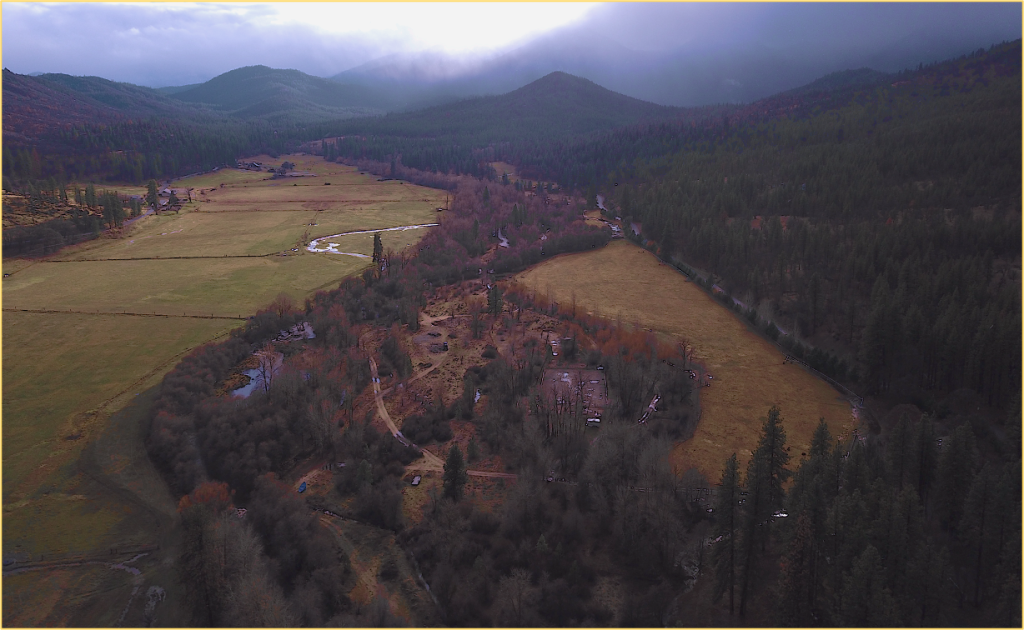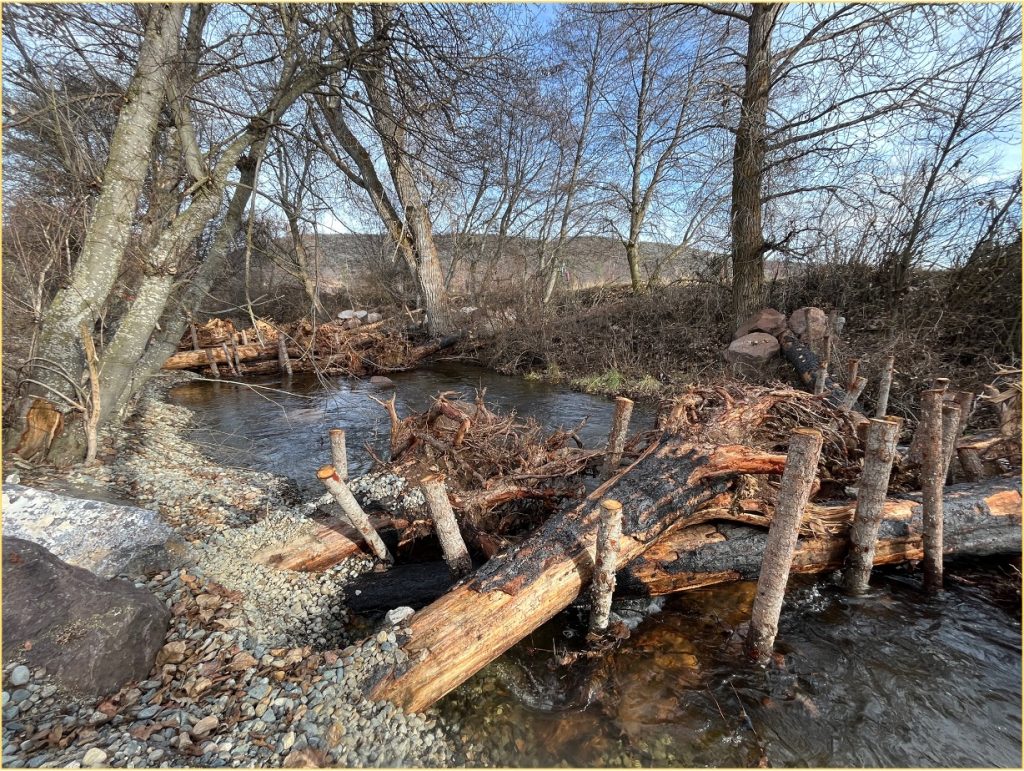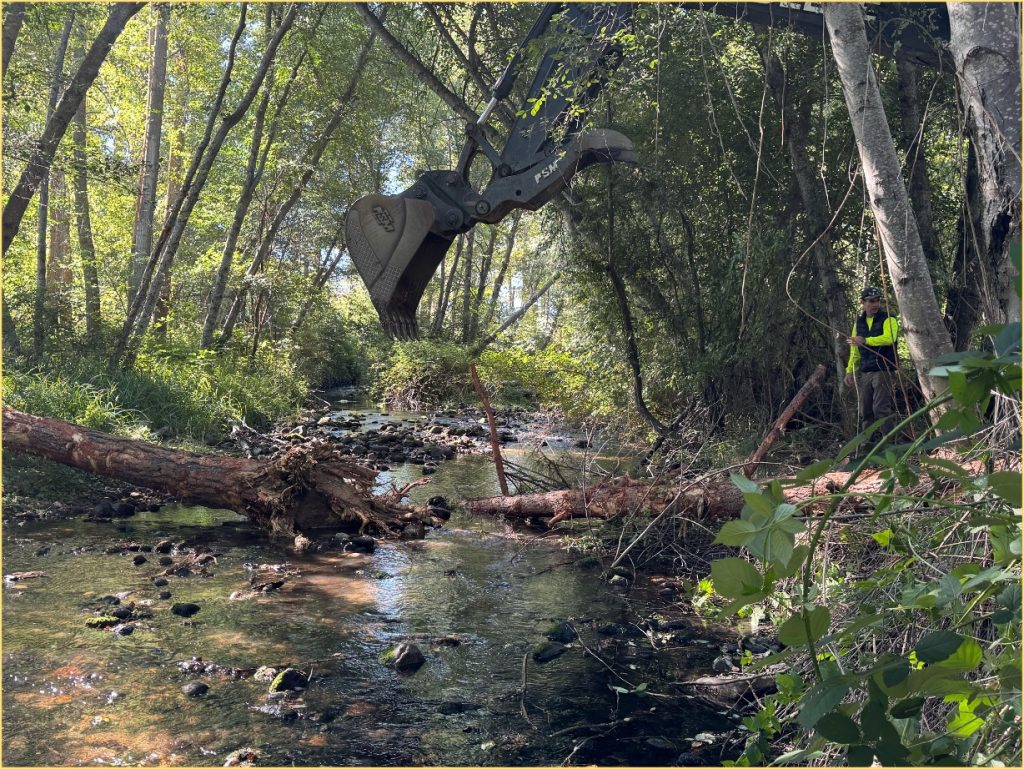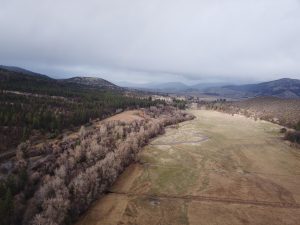The mid section of French Creek is the only tributary area in the Scott River watershed with documented coho spawning and rearing every year for the past 20 years, indicating its significance to the core, functionally independent Scott River coho population.
To underscore the potential positive impact of restoration efforts on coho salmon populations, French Creek may offer valuable insights. Since 2017, various restoration measures have been initiated to support coho salmon. These include the installation of beaver dam analogs, the creation of a slow-water side channel, the placement of numerous large wood structures, and the addition of suitably sized spawning gravel (see map below). The increased utilization of this reach by returning coho salmon can serve as a metric for assessing project effectiveness and identifying actions that may contribute to coho recovery.
Building on previous successes, the SRWC partnered with the Quartz Valley Indian Reservation (QVIR) and The Nature Conservancy (TNC), which acquired the 380-acre Miners Creek Ranch in 2023, to secure funding from the Bureau of Reclamation and the California Department of Fish and Wildlife. This effort focuses on the mid-to-upper French Creek watershed, delivering restoration designs for two one-mile stream reaches, conceptual plans for 3.5 additional miles, and a plan to convert 80 acres of irrigated pasture into dryland pasture and native vegetation. The project also includes forest condition assessments and plans to reduce fire risk and improve forest health.
In addition to SRWC, QVIR and TNC, project partners for this exciting project will include many agencies and two engineering firms, both Prunkuske Chatham, Inc. (PCI) and cbec. As a place-based organization, SRWC values the strong relationships with landowners that make this work possible, and we are grateful for the opportunity to continue expanding our efforts in French Creek.
SRWC continues to monitor the stream, conducting snorkel surveys for juvenile and adult fish, using Passive Integrated Transponder (PIT) tags to track individual fish growth in restored vs. unrestored habitats, and employing game cameras to observe wildlife. These efforts deepen our understanding of how restoration impacts the ecosystem.Funders for 2024 instream work was provided by the United States Fish and Wildlife Service, Bureau of Reclamation (BOR) administered by the National Fish and Wildlife Foundation, and the upcoming comprehensive planning project is funded by BOR and California Department of Fish and Wildlife.





In October, SRWC, through its French Creek Habitat Improvement project, implemented 6 large wood jams along a 590 ft reach of the stream associated with spawning gravel augmentation and the removal of 1-acre of invasive blackberries. A second project, located on The Nature Conservancy’s Miners Creek Ranch, installed an additional 3 engineered log jams, augmented spawning gravels, and planted 1200 stems of native cottonwood and willow. When high flows occurred in December, the log jams went into action spreading water widely across adjacent floodplain surfaces that hadn’t been underwater for years due to degradation of the stream system. The native plantings will supply food and building materials for beavers who inhabit the stream. Game camera photos show numerous animals – beavers, minks, bears, foxes, ringtails, deer, skunk, possums, coyotes and bobcats – exploring and utilizing the newly created habitats.


